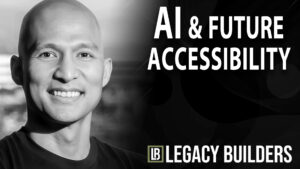How to Save Money on Your Social Security Taxes

Most people look forward to the day when they start to receive the rewards for putting all their hard-earned money over the years into social security. However, some people end up with a lot less than they had planned on because they end up paying more taxes on those benefits than they had expected. So what can you do to help lower the tax bill on your Social Security benefits?
For starters you need to know what tax table you fall into. It all depends on how much provisional income you make, which is determined by adding your adjusted gross income, your nontaxable interest and half of your Social Security benefits. If you earn less than $25,000 as a single or $32,000 for a joint return then you won’t have to pay taxes on your SS benefits.
However, as much as 50 percent of your benefits could be taxable if your provisional income is between $25,000 and $34,000 for singles and $32,000 and $44,000 for joint filers. If you surpass those figures as much as 85 percent of your benefits could be taxed.
So in order to avoid these taxes you have a few options. You can give as much as $100,000 tax free a year to charity from an IRA if you are 70.5 years or older. You can also put as much as $125,000 into a Qualified longevity Annuity Contract (QLAC). This amount does not count against you when your required minimum distribution is calculated.
Another move you can make is to withdraw money from a tax-free Roth IRA or you can roll money over from a traditional IRA to a Roth many years before you start collecting SS benefits, which will help you reduce taxes in retirement. Of course, for high net worth individuals it might be very difficult to get below the 85 percent threshold, which is why it’s important to have an overall tax-efficiency plan instead of simply focusing on saving on Social Security taxes.
http://www.kiplinger.com/article/retirement/T051-C001-S003-how-to-limit-taxes-on-social-security-benefits.html
Mark Lutz: A Lifelong Mission to End Extreme Poverty
When Mark Lutz speaks about eradicating extreme poverty, his passion emanates from a lifetime of service and firsthand experiences around the world. Lutz, Senior Vice President of Global Philanthropy at Opportunity International, has spent more than four decades raising funds for missions and microfinance—transforming countless lives in the process. A Childhood Shaped by Apartheid Born…
Aaron Manoucheri: Building a Multi Generation Legacy in Real Estate
Aaron Manoucheri, a third-generation real estate investor and partner at Manoucheri Brothers LLC, understands the delicate balance between tradition and innovation in the family business. In a recent interview on American Dreams, he shared his journey, philosophy, and insights on navigating the ever-changing real estate landscape while maintaining a deep connection to his roots. A Legacy…
Combining Profits with Purpose: A New Era of Impact Investing
A Panel Discussion with Peter Borish, Linda Horner & Dr. Kal Mentak In an era where traditional philanthropy and capitalism often seem at odds, a new wave of thinking is reshaping the landscape—one that integrates financial success with meaningful social impact. This was the central theme of a compelling panel discussion featuring Peter Borish, Linda…
The AI Revolution: Avoiding a Future Controlled by the Few
Artificial Intelligence (AI) is at an inflection point. While most discussions center around the potential and risks of AI, Aldo Carrascoso, CEO and Co-Founder of Vivum AI, offers a different perspective—AI is at its own “War of Currents” moment, much like the battle between AC and DC electricity in the early 20th century. In a…




